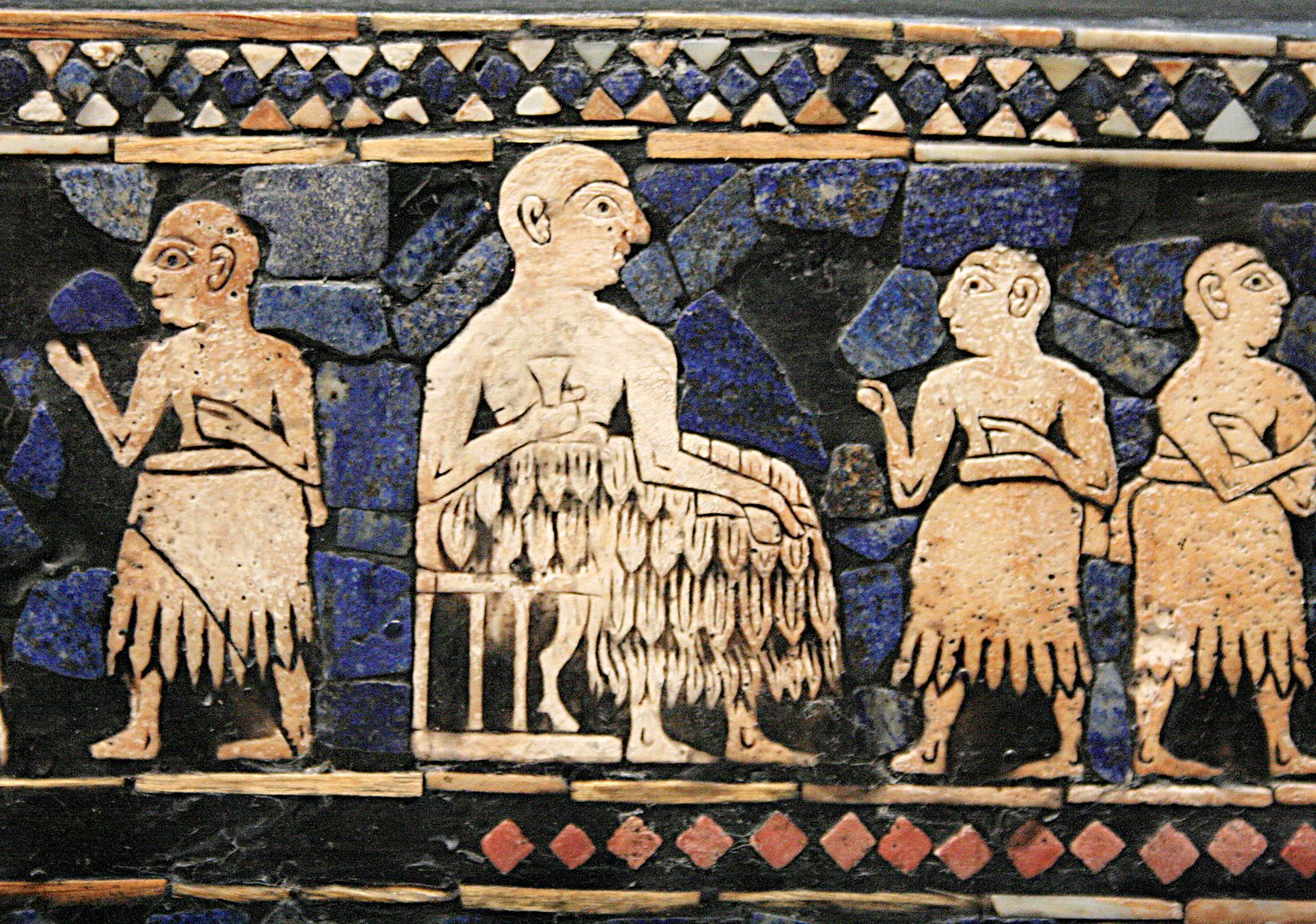
A Sumerian soldier who presumably marched alongside this equipage wore a copper helmet.Previous | next Civilization in MesopotamiaĬlass, Power and War among the Sumerians | Sumerian Polytheism, Sin and a Flood | Sargon, Sumerians and Babylon | Sumerian Culture and Hammurabi at Babylon | Arrival of Hittites, Hurrians and Kassites | Hittites, Asyrians and Aramaens | Babylonian Science and the Gods | Babylonian Myths of Creation and a Great Flood This sled was drawn by two oxen wearing large copper collars, while the reins had copper studs. 2500 B.C.).Īnother proof of the indestructibility of copper is connected with a Sumerian wooden sled which was intended to run on the sands it is picturesquely known as 'The Queen's Sledge'.

long this came from the temple at Ningursu (c. A more remarkable one shows a god holding a peg about 6 in. long, relates to a king of the First Dynasty at Ur. One such record, in the form of a copper or bronze peg 12 in. Small bronze or copper figurines were likewise buried there at the same time. Known as the Imdugud Relief, it is entirely of copper and shows a lion-headed eagle holding two stags by their tails.Įven at such an early date, these people adopted the practice of burying under the foundations of buildings a record concerning the builder. Copper-relief found at Al'Ubaid, near Ur, dating from about 3100 B.C. The stags' antlers, which are in high relief, were made of wrought copper and then soldered into their sockets with lead.įigure 1. The whole relief is of beaten copper within a copper frame and on a wooden background, the overall dimensions being 7 ft 9.5 in. 1) which represents a lion-headed eagle holding two stags by their tails. To this stage belongs the magnificent Imdugud Relief (Fig. 2800 to 3000 B.C.) sometimes they were fastened by nails or copper wires set in bitumen. These figures were attached by copper clamps to the walls of buildings, notably at al'Ubaid (c. Thin copper sheets were beaten and shaped on a wooden background with a bitumen lining-a favourite design was a bull's head. The Sumerians were masters of sculpture and some splendid examples of their art may be seen in London. Far older than any of these are some copper arrows and quivers, together with prehistoric Sumerian copper spearheads, all of which have successfully survived the test of time.

Still earlier are some copper chisels and other tools from Ur, likewise copper razors, harpoons, cloakpins and other small articles. 2600 B.C.), also silver ones of the same date, besides silver-spouted bronze jugs, saucers and drinking-vessels which were probably used for ceremonial purposes.

Bronze pots and mixing trays have been found at al'Ubaid, near Ur (c. If we accept the chronology which is favoured at present by the British Museum, their greatest period ranged between 28 B.C. They made surveys, kept exact land records, and were capable mathematicians. They had a system of writing, an art which the Egyptians only acquired late in their history. In other respects this group of city states was at first more advanced than those of the Nile. These early peoples developed considerable skill in fabricating copper and from these centres the rudiments of craftsmanship spread to the river-dwelling people of Egypt, where it continued to flourish for thousands of years long after their own civilization had degenerated.Īlthough the Sumerian art-forms were rather crude, many of the objects they produced were wonderfully life-like. Copper probably first came into use as the earliest non-precious metal employed by the Sumerians and Chaldeans of Mesopotamia, after they had established their thriving cities of Sumer and Accad, Ur, al'Ubaid and others, somewhere between 5,000 and 6,000 years ago.


 0 kommentar(er)
0 kommentar(er)
